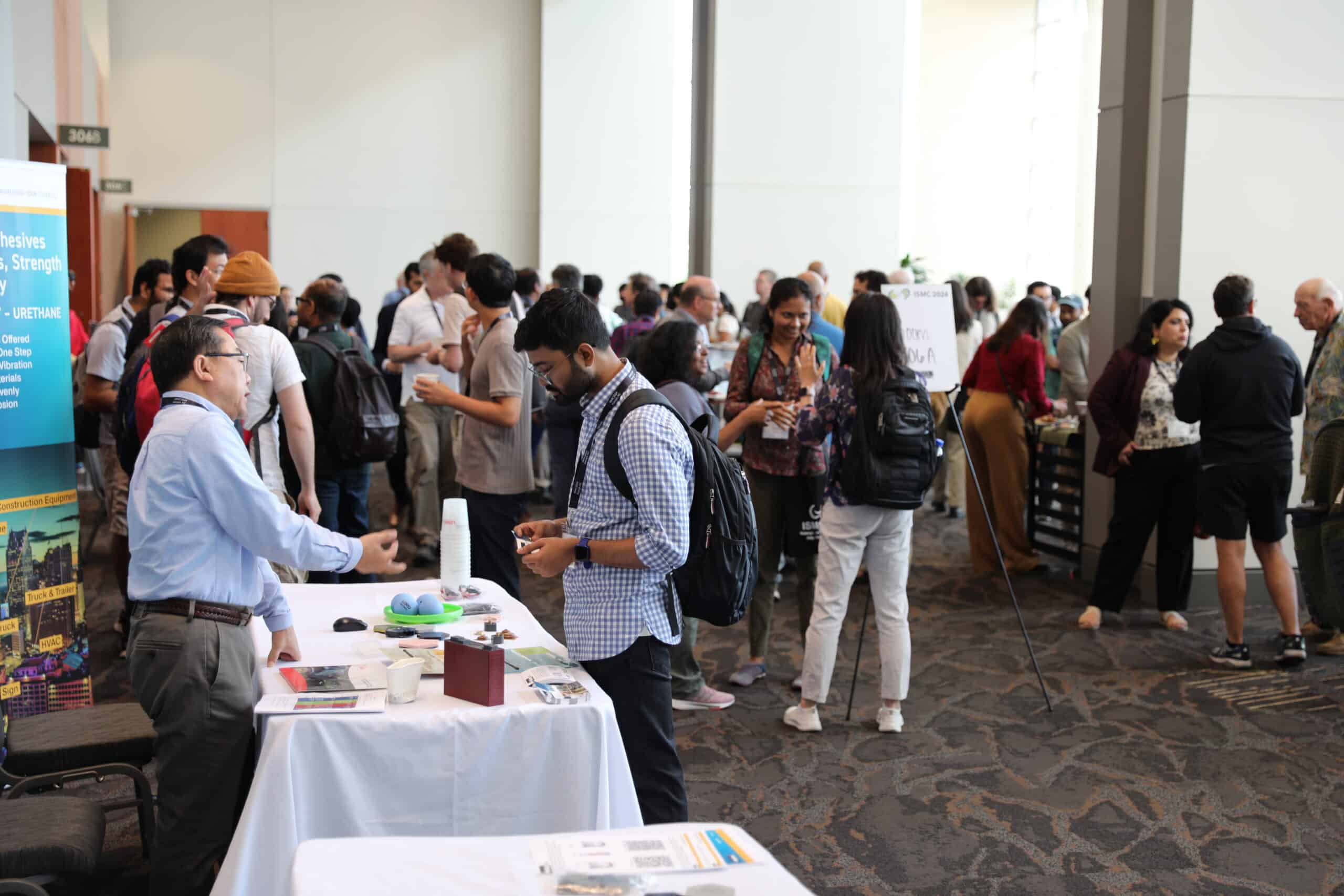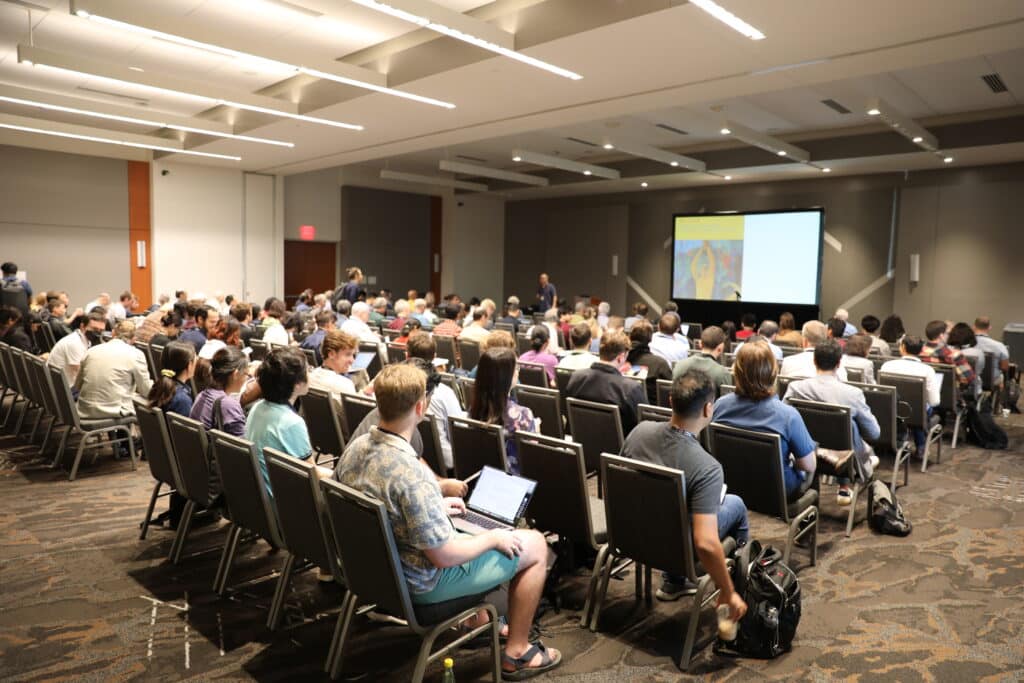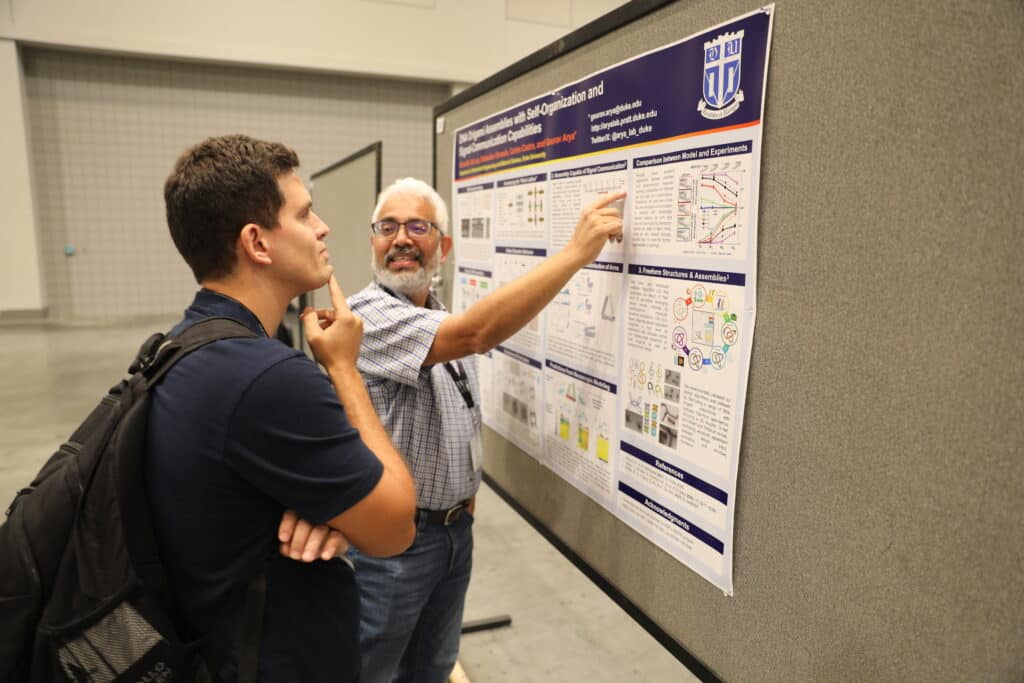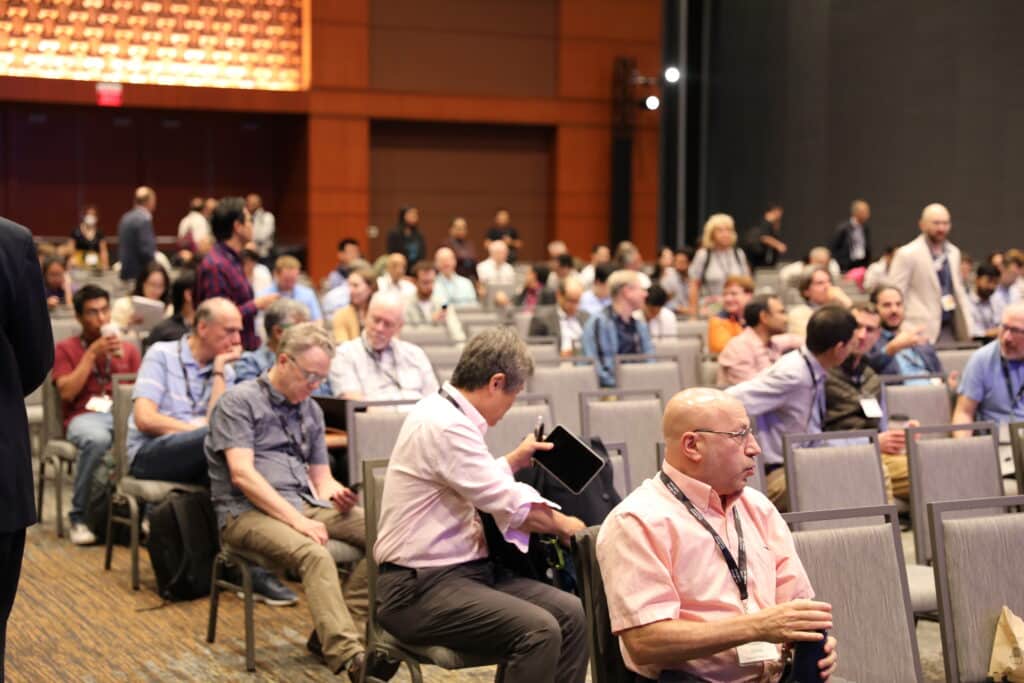International Soft Matter Community Converges in North Carolina
The 8th International Soft Matter Conference saw nearly 500 participants from all over the world come together for the week-long event in Raleigh.

The 8th International Soft Matter Conference (ISMC 2024) drew nearly 500 participants from around the globe to Raleigh for a week-long event this summer. Soft matter science, which began gaining prominence in the 1980s and early 1990s, has seen significant growth and organizational development in recent years.
This field encompasses materials like colloids, polymers, granular substances, and biomaterials, all of which are critical for advancements in industrial chemistry, biomechanics, medical robotics, and climate sustainability.
In a collaboration between Duke, North Carolina State University and the University of North Carolina-Chapel Hill, alongside the Soft Matter Association of the Americas (SMAA), Raleigh recently played host to the first ever International Soft Matter Conference in the United States.

Michael Rubinstein, the Aleksandar S. Vesic Distinguished Professor in the Thomas Lord Department of Mechanical Engineering & Materials Science, was one of several Duke faculty serving on the organizing committee for ISMC 2024.
“Since the early 2000s, the soft matter community has been highly dispersed,” he shared.
ISMC has a rich history of building interdisciplinary collaboration among scientists, not just in materials science fields, but also in physics, chemistry and biology. Rubinstein is also the president of the SMAA and has spent the last several years working to bring a conference of this magnitude to the United States.
The series began in 2007 with the first one held in Aachen, Germany, organized by the SoftComp European Network of Excellence. This inaugural conference set the stage for future events by identifying key topics in soft matter, such as biomaterials, colloids, and complex fluid dynamics.
However, bringing the conference to the United States proved challenging. In 2013, a bid to host an ISMC with the support of the American Chemical Society Colloids and Surface Chemistry Division fell through. A subsequent attempt in 2015, spearheaded by the Royal Society of Chemistry and planned for Harvard University, also failed to materialize.

Meanwhile, the conference series continued its global journey, traveling from Spain and Italy to France, Poland, and Japan before arriving for the first time this summer in the United States.
ISMC 2024, held over the summer at the Raleigh Convention Center, attracted nearly 500 participants from around the world. Attendees gathered to exchange research ideas, collaborate on future projects, and discuss advancements in the field of soft matter science.
The conference featured a wide-ranging program that included a selection of plenary talks, panel discussions, poster sessions, and networking opportunities, providing a platform for leading experts in the field to discuss recent advancements and future directions in soft matter research.
By the Numbers
The 8th International Soft matter Conference is part of the ISMC series held around the world and the first such event organized in the Americas. The charts below highlight just how far reaching ISMC 2024 was for its global participants:
The local organizing committee for ISMC 2024 was led by co-chairs Rubinstein, Ronit Freeman, lead event planner and professor of applied physical sciences and biomedical engineering at UNC-Chapel Hill, and Jan Genzer, the S. Frank and Doris Culberson Distinguished Professor of Chemical and Biomolecular Engineering at NC State.
“Organizing the Soft Matter Association of the Americas (SMAA) and bringing the International Soft Matter Conference (ISMC) to the Americas has monumental significance for the development of this rapidly growing field of science,” Rubinstein shared. “It brought together scientists from different disciplines from over 30 countries and encouraged them to exchange their ideas and approaches that allows further advances and faster progress of their research.”

“It is essential to build bridges between academia, industry and policymakers to make an impact on our community,” Freeman added. “This global conference catalyzes these interactions to show how soft matter really matters to North Carolina and the world.”
Penny Gordon-Larsen, vice chancellor for research at UNC-Chapel Hill, said, “The Triangle is a hotbed of soft matter innovation, creating game-changing solutions to pressing global challenges. We’re proud to co-host this one-of-a-kind gathering of minds who are leading the charge.”
Other Duke members of the organizing committee included Patrick Charbonneau, professor of chemistry, Christoph Schmidt, the Hertha Sponer Distinguished Professor of Physics and co-director of the Duke Materials Initiative (DMI), and Stefan Zauscher, Duke MEMS professor and fellow co-director of DMI.
The cross-collaboration of North Carolina universities on a global stage epitomized what the conference was hoping to accomplish: Fostering connections between researchers from diverse areas within the field of soft matter science.
The start of the conference featured remarks from Chris Clemens, provost and chief academic officer at UNC-Chapel Hill, Jennifer Lodge, Duke’s vice president for research and innovation and professor of molecular genetics and microbiology, and state Sen. Paul Newton of Cabarrus County, among many others, highlighting the collaborative efforts in soft matter research across these institutions.
Notable plenary sessions that followed included Gaurav Arya, professor in Duke MEMS, who covered DNA assemblies with emergent functions, Howard A. Stone, who discussed physicochemical hydrodynamics, and Jacinta Conrad, who provided insights into DNA relaxation dynamics across scales and regimes.

The conference’s technical sessions surveyed a broad spectrum of topics within soft matter, categorized under themes like biological systems, colloids, fluid dynamics, glasses and granular materials, interfaces and membranes, and others. Each day included multiple parallel sessions, allowing participants to engage with thoughtful research across categories that may have been outside their own expertise.
Students and post-doctoral researchers were also given space to showcase how far their work has come. On July 30 and August 1, the convention center’s exhibit hall was jam-packed with posters sharing information on topics like the interfaces, surfaces, and membranes category that highlighted research on nano-porous surfaces, interfacial forces, and the application of nanostructured coatings to enhance solar panel efficiency. There was also the glasses, granular, and jamming section that shed light on the fundamental properties of materials under stress.
The future of soft matter in the NC Triangle has been elevated thanks to the efforts of the SMAA and the organizing committee behind ISMC 2024. With the first ever U.S. based conference in the books, the next one is set to take place September 2025 in Crete.
“The event was highly successful with the lineup of over 50 outstanding invited speakers and almost 500 delegates and was made possible by close collaboration of scientists from three Triangle universities and by the financial support of these universities,” Rubinstein said. “The objective now is to sustain the momentum and to assure that both the ISMC and SMAA will continue and prosper in the future.”
